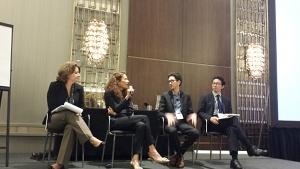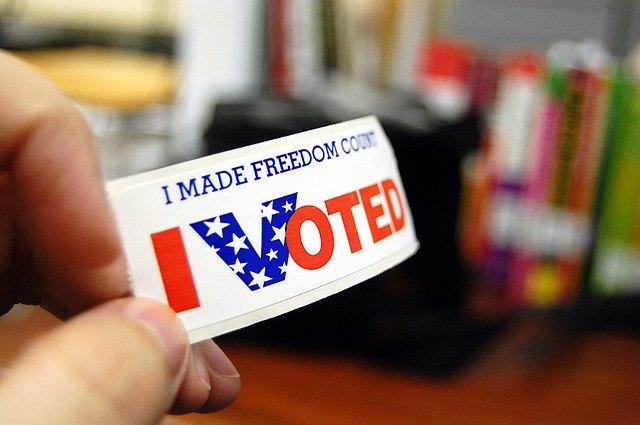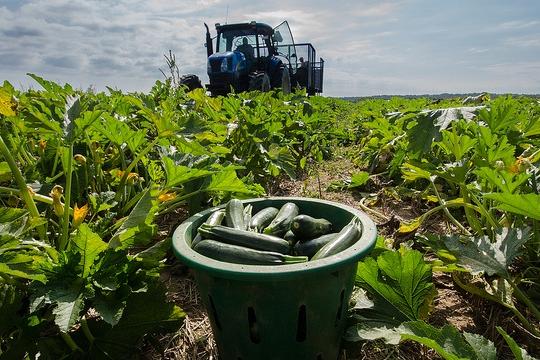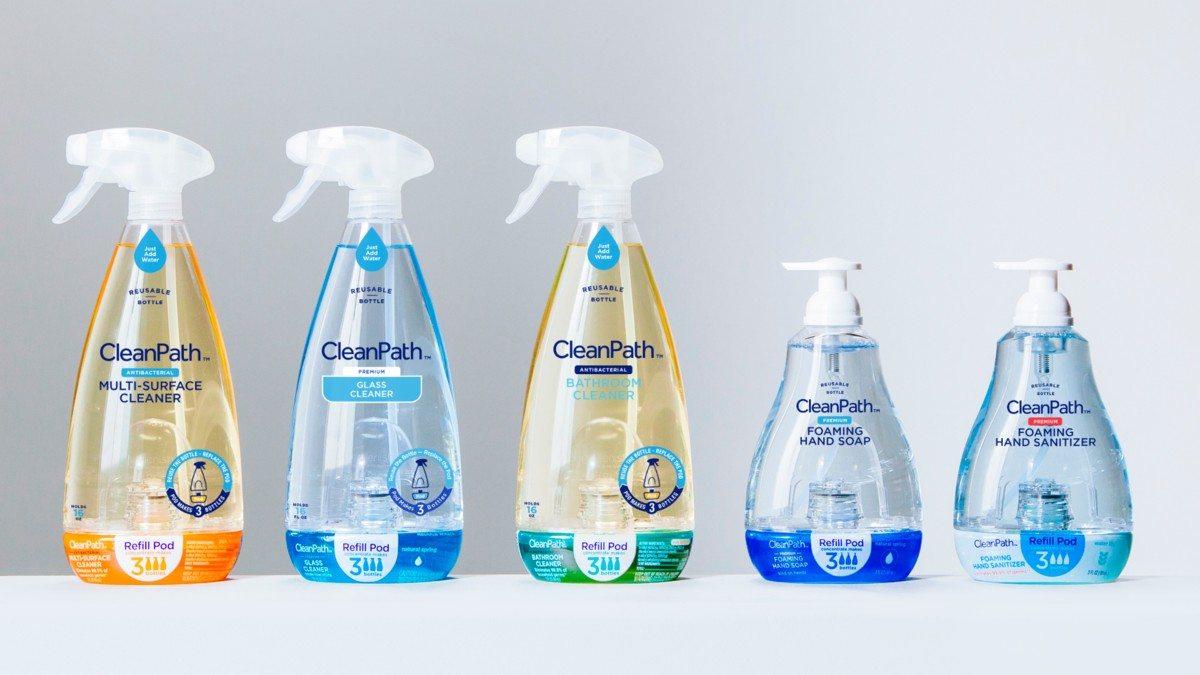3p Weekend Conferences: CSR and Planning for the Unplanned at BSR '14


With a busy week behind you and the weekend within reach, there’s no shame in taking things a bit easy on Friday afternoon. With this in mind, every Friday TriplePundit will give you a fun, easy read on a topic you care about. So, take a break from those endless email threads, and spend five minutes catching up on the latest trends in sustainability and business.
Two years ago, shortly after the 2012 BSR Conference in New York, Hurricane Sandy struck the city. Few anticipated the severity of the damage brought on by rising floodwaters, which reached 17 feet in some areas. Gov. Andrew Cuomo estimated that the total price tag for the storm will reach $42 billion, the New York Times reported.
The unforeseen and catastrophic damage caused by Sandy serves as a chilling reminder that unplanned events lurk around every corner -- that everything can change in the blink of an eye.
As our planet warms, studies show such unprecedented storms, hurricanes and floods will only become more commonplace. But of course, natural disasters aren't the only unexpected events that can shake people -- and businesses -- to their core. From stock market jolts and dislocation to man-made tragedies like the Rana Plaza factory collapse in Bangladesh, such shocks to the system come in many forms -- and businesses are now expected to plan for the unplanned and to jump into action when disaster strikes the communities in which they operate.
At the 2014 BSR Conference, a group of though leaders assembled to discuss just that in a panel entitled "Planning for the Unplanned: The Role of Corporate Responsibility in Unforeseen Events." We pulled some of our favorite quotes from the panel, so you can feel like you were there -- even if you couldn't make it to New York.
During the panel, Koichi Kaneda, senior director of corporate social responsibility for Takeda Pharmaceutical, relayed his company's response to the 2011 Tōhoku earthquake in Japan -- the fourth largest in the world since record-keeping began in 1900. "From our viewpoint, we are a corporate citizen. So, I'm not sure if this is a responsibility or this is a natural reaction," Kaneda said. "As a pharmaceutical company we have an integrated thinking because our business has influence on society and the change of society influences our business. So, when something happens we have to do something."
Paul Massey, executive vice president of Weber Shandwick, shared how one of his clients, Greek yogurt giant Chobani, is tackling unrest in the Middle East, particularly in Turkey. "These are such complex, large-scale pressures that the more collaboration and discourse that can occur across corporate actors, I think the greater the level that we are able to identify viable solutions," Massey said. "Your company making progress in identifying opportunities is obviously meaningful, but the far greater force is if we can find solutions that are scalable across the industry."
An interesting addition to the discussion was Gabi Zedlmayer, vice president and chief progress officer for HP, who spoke about how the information technology revolution will forever alter the way people and businesses respond to crisis. This includes not only recovery and response, but also prevention and preparedness, she continued. For example, 24 people lost their lives to the 2013 tornado in Moore, Oklahoma because residents only had a 14 minute warning before the storm hit. Using big data solutions, HP has been able to extend warning times up to an hour in advance. "An hour in advance could be the difference between life and death," Zedlmayer said.Image by Mary Mazzoni"While technology by itself is not ever the solution, it's a phenomenal enabler," she concluded. "The betterment of society … is a responsibility that we all share. Take a step back and think about why companies exist: Companies exist to provide shareholder value but also a value for society from day one. There's no excuse nowadays to not utilize technology as an enabler.
"I think we have to do a lot better and we have to do a lot more, and the opportunities are there. So, I often say there's no excuse anymore. People cannot say it can't be done. It can be done. A lot more can be done, but we need to come together more efficiently."
Based in Philadelphia, Mary Mazzoni is a senior editor at TriplePundit. She is also a freelance journalist who frequently writes about sustainability, corporate social responsibility and clean tech. Her work has appeared in the Philadelphia Daily News, the Huffington Post, Sustainable Brands, Earth911 and the Daily Meal. You can follow her on Twitter @mary_mazzoni.
66 Percent Of Voters Voted For 'None Of The Above'


What is an economist doing writing about an election? As a numbers guy, the statistics from the November 2014 mid-term election demands attention because of their implications for our economy and sustainability.
A lack of voter participation was the most telling statistic of this last election. Voter participation was a record low 33 percent. This means 66 percent of potential voters were so unmoved by the candidates and the issues that they did not participate. The obvious question (economic and political) is: Why did the majority of voters vote for 'none of the above?'
Boomers vs. millennials
The real news of election night was not about the Republicans or Democrats. It was the clear divide between the baby boomer and millennial generations. The boomer generation, especially the white boomer generation, actively participated in this election. Almost half the boomer generation voted, and their participation was more than half as large as any other age group. And the voters on Nov. 4, 2014 were predominately white, with 75 percent participation.
In comparison, the millennial generation skipped this election. Only approximately 1 in 1o millennials voted. Their participation was almost half of the participation by their older siblings and grandparents. Among the millennial generation it was unmarried women and minorities that most noticeably did not vote. The millennial generation members that did participation were also most likely to have voted for Republican Mitt Romney for president in 2012.
It’s the economy … politicians!
In terms of this election the economy was the most posted topic on Facebook. In most pre-election polls the issues of jobs and economic growth dominated as election night issues.
Based on voter participation, the millennial generation voted “no” to whether the political parties had answers to their issues of burdening school debt, limited job opportunity and barriers to homeownership. Neither party was viewed as being “cool with a purpose” in terms of sustainable economic or environmental solutions.
The boomer generation voted their pocketbooks as they always have. Their economic issues were lower taxes and increased economic growth. They continue to look to their government to grow the economy’s size to achieve lower taxes and secure their social security payments.
What this means for sustainability
Since my 2007 prediction of a green economic revolution the acceptance that adopting sustainable best practices will create profits, economic growth and jobs still struggles for voter and CEO traction. The encouraging news is that sustainability is now a CEO issue, but a recent Accenture study found it to be back-burner issue. The real CEO issue remains increasing quarterly profits and revenues. And for most CEOs a connection between sustainability and improving quarterly results is still missing.
This disconnect also exists among voters. The boomer and millennial generations could not be further apart on the issue of sustainability. For much of the boomer generation, sustainability is defined by increased regulation and taxes. For the millennial generation, sustainability is viewed as their future. They are buying more sustainable products and post about their sustainability on social media, but they are yet to flex their full political muscle on the issue.
Sustainable economics wins
The economic reality is that unsustainability is not sustainable. Global warming is a reality, and its costs on human health and our economy will grow. Investments in energy efficiency and renewable energy are sustainable solutions and these technologies will continue to gain global economies of scale and price competitiveness with fossil fuels.
An epidemic of obesity and diabetes is also a reality. The health care and environmental costs of an unsustainable industrial food system are very large and growing. Consumers are responding by making healthy convenience foods the fastest growing food market segment. As this market segment grows it will gain economies of scale that will increase its price competitiveness against industrial foods laced with sugar, starches and chemicals.
Fiscal responsibility is also a sustainability issue. We have a government that is funded by debt. Our national debt is almost $18 trillion or approximately $60,000 for every man, woman and child in America. Our tax system is so incomprehensible that 82 million American taxpayers pay to have a third party prepare and submit their tax forms. The system is so misshaped by special interests that the average actual corporate tax rate is approximately 12 percent, with major corporations like GE, Morgan Stanley and Verizon reporting single-digit tax rates for 2013.
A well understood economic concept is that there is no free lunch. At some point unsustainability will again result in another recession, damaging extreme weather event and health crisis. Sustainability is good for business, for our economy and job creation. At some point sustainability will be good politics. The question will be: How much pain will be required before we vote for a sustainable future?
Image credit: Flickr/dokidoki
Bill Roth is an economist and the Founder of Earth 2017. He coaches business owners and leaders on proven best practices in pricing, marketing and operations that make money and create a positive difference. His book, The Secret Green Sauce, profiles business case studies of pioneering best practices that are proven to win customers and grow product revenues. Follow him on Twitter: @earth2017
SoCal Edison Signs Historic Agreements for 2.2 Gigs New Capacity


Southern California Edison (SCE) made U.S. power industry history Nov. 5, signing local procurement contracts for 2.221 gigawatts of electrical power from a diverse range of new energy resources. This represents roughly 10 percent of peak customer usage across its service territory, which spans 50,000 square miles within central, coastal and Southern California.
Setting a precedent in the U.S. power sector, SCE for the first time evaluated over 1,800 final offers and a wide range of energy resource types “in a head-to-head competition to meet a specific reliability objective,” the Edison International power utility stated in a new release.
In the end, SCE selected 69 offers from “preferred” resources that are cleaner or more environmentally sustainable than conventional energy resources and energy storage facilities, including intelligent energy storage systems. SCE also signed contracts for five new natural gas power plants. All are subject to approval from the California Public Utilities Commission.
"Preferred" environmentally sustainable resources loom large in meeting SCE's local electricity needs
Totaling 2,221 MWs, collectively the contracts SCE signed Nov. 5 have the capacity to meet the electricity needs of some 950,000 homes. In signing them, SCE is following through on state forecasts of local electricity reliability needs. The contracts also move the company closer to its own plan to meet long-term electricity needs throughout its service territory given the closure of the San Onofre Nuclear Generating Station and the anticipated retirement of older natural gas power generation plants along the Southern California coast, the investor-owned utility (IOU) explained.
“The competitive solicitation sought not only resources to help enhance the reliability of the power network in specific geographic locations (Los Angeles Basin and Ventura/Santa Barbara), but also to encourage conservation and develop new technologies and innovative solutions to meet identified local electric reliability needs in Southern California.”
With clean, environmentally sustainable “preferred” resources making up the vast majority of the new electricity supply contracts, SCE will be making a large contribution in terms of helping California meet its renewable energy goals, which call for renewable energy resources to supply one-third of the state's power needs by 2020.
Head-to-head competition across a diverse range of new energy resources
In addition to renewable, emissions-free solar photovoltaic (PV) electricity and natural gas-fueled generating capacity, the wide variety of energy resources SCE solicited proposals for included combined heat and power, distributed generation, energy storage, energy efficiency, resource adequacy and demand response systems, in which customers shift electricity usage during peak demand periods.
“This solicitation is the first time that such a wide range of new diverse resources were directly competing in the purchasing process,” Colin Cushnie, SCE vice president, Energy Procurement & Management, was quoted in the news release. “No single energy source can give us everything we need all of the time, particularly with our emphasis to use environmentally clean resources. To provide for flexibility, we need to accommodate a mix of energy resources.”
“Using energy more wisely, improving energy diversity and increasing flexibility are the keys to maintaining and improving the reliability of Southern California’s grid while incorporating renewables and new technologies,” said Cushnie. “These projects will provide energy solutions to meet the reliability and affordability needs of electricity customers.”
SCE's latest solicitation was historic and precedent-setting in more ways than one. It was also the first time SCE contracted with energy storage projects through a competitive solicitation, according to the company.
Historic first utility energy storage solicitation
Among the project contracts signed by SCE was one with Millbrae, California-based Stem, a pioneering developer of advanced energy storage technology, systems and analytics capable of managing fleets of geographically dispersed and technologically diverse energy storage systems.
As per the the terms of the multi-year local power capacity procurement contract, Stem will deploy 85 MWs of advanced, behind-the-meter energy storage capacity at customer locations in the West Los Angeles Basin, Stem explains in a press release. Stem's smart, behind-the-meter energy storage systems “will serve as dispatchable capacity to enhance the local reliability of the region,” the company states.
“SCE has a track record of leadership and national influence in embracing innovative preferred resources, from its support of solar power and energy efficiency to its rollout of demand response programs,” said John Carrington, CEO of Stem. “We have spent several years building software, financing, and innovative distributed storage solutions that provide a dynamic grid resource. The result is a solution that looks and feels familiar to utilities and benefits their customers.
Added Janice Lin, co-founder and Executive Director of the California Energy Storage Alliance: “This is a major win for behind-the-meter storage, demonstrating that this technology is a valuable tool for both utilities and their commercial and industrial customers.. SCE is a pioneer in leveraging customer-sited storage for local capacity requirements and should be commended for its efforts to make storage an integral part of its operations.”
More information on the 2,221 MWs worth of contracts SCE signed November 5 is available on an SCE web page.
*Image credits: 1), 2): SCE; 3) Stem
Could Hydrogen Peroxide Stop Global Starvation?


Hydrogen peroxide (H2O2) has long been used by produce distributors to reduce spoilage during shipment. The oxygen-rich substance apparently helps slow bacteria growth and acts as a natural preservative for fruits and vegetables.
Assuming we're eating the food we put in our fridge, many of those products should have a healthy, ecologically-safe shelf life. Studies show that despite the handy preservative, an amazing amount of the food we buy here in North America (40 percent) goes to waste.
But in other areas of the world, there may be other reasons for the food loss, such as distance, adverse climate issues and shipping delays. That's what prompted an Israeli company that develops H2O2-rich preservative solutions to give some thought to the problem. Israel-based Pimi Agro believes that if hydrogen peroxide dips can protect produce during routine shipping and sale, it should be able to extend the life of much larger food shipments, such as those heading to areas that have been devastated by famine or natural disaster.
Israeli markets often face many challenges when it comes to getting the country's sizable fruit and vegetable exports to market during warm-weather months. Citrus fruits, sweet potatoes and table potatoes are all often at risk during transport. Increased temperatures make it even more difficult to ensure that food products purchased around the world remain fresh to the point of sale.
And that is where Pimi Agro comes in. The company has developed a number of eco-friendly dips and sprays for organic produce comprising stabilized hydrogen peroxide (STHP) and other ingredients that it says are eco-friendly. The combinations arrest deterioration that is caused by bacteria and natural causes. Over the last 15 years, it has developed a variety of solutions to address different spoilage or growth issues in onions, potatoes, sweet potatoes and fruits. According to Pimi’s chief technology officer and founder, Nimrod Ben-Yehuda, the company's success has relied on meticulous research -- and finding the right proprietary solution for the specific kind of produce and problem. Just applying hydrogen peroxide to the produce will, in many cases, advance rot -- not arrest it. But according to Ben-Yehuda, the company's calibrated solutions both sterilize and slow the deterioration that lead to food poisoning.
“Listeria, which has been a culprit in many cases of recent food poisoning … is killed within 60 seconds” once the product is applied, Ben-Yehuda told the Times of Israel.
It’s estimated that a third to a half of the produce that is shipped across the world doesn’t make it to its port of destination, largely due to spoilage. But Ben-Yehuda doesn’t believe that needs to be the case. He says that the company’s products, when applied, will extend the life of many types of produce up to 10 weeks.
“You could walk from one end of India to the other over a period of 10 weeks, and the vegetables and fruit you carry will still be fresh for the entire time,” Ben-Yehuda said.
Admittedly, it’s a bold claim. But instances like the current starvation problems in Sierra Leone, where residents have been under quarantine without adequate emergency food shipments, might be adverted if the shelf life of healthy food sources could be extended. And it is worth noting that the claim assumes that there is the necessary coordination of transport and delivery options to ensure the shipment gets to the destination.
Ben-Yehuda says he plans to submit a report to global organizations that work with food distribution issues like the United Nations and the World Bank to alert them to the fact that using his products could reduce starvation worldwide. And just as encouraging, says Ben-Yehuda, doing so could cut down on the need for fungicides, which are believed to be at the root of the decline of the world’s bee populations.
Image credit: USDA
Supply Chain Managers: What You Need to Know About Climate Change


By Srini Vasan
By nature a chain is comprised of a series of links, each interdependent on the next. The supply chain is no different. Though the links may be intangibles like materials, distributors, retailers and customers, each piece serves as an important function without which business grinds to an unprofitable halt.
Staying ahead of potential risks before they become real threats is merely part of the deal when you run a business, but what about those factors that you can’t anticipate -- much less control? For example, how does a successful business prepare for or even begin to respond to factors that can disrupt the production of essential raw materials such as agriculture, fuel or mining and metals commodities? By knocking out this first essential step, the entire supply chain collapses before it’s even fully formed.
At this point, any good supply chain manager might be thinking to themselves, “Sure, but we have contingency plans in place to address natural disasters or man-made supply-chain disruptions such as export restrictions."
That may be true. However, this doesn’t take into account the long-term fallout of the Big C -- climate change. Businesses often overlook this critical piece, adopting a “if it ain’t broke, don’t fix it” mentality. Sooner or later, chances are these marked changes in our atmosphere will amplify, alter or exacerbate issues in raw material availability or their transportation thereof.
As a company whose sole business is to ensure that the distribution portion of your business model is solid, our ears perk up when we hear about potential catastrophic disruptions which could ultimately result in a global supply chain shockwave. Perhaps that sounds a bit drastic, but working to mitigate these risks in the daunting face of climate change is something all businesses would do well to keep on their radar.
Thanks to a recent study compiled in an OXFAM discussion paper, policy advisors and consultants laid a comprehensive foundation for how we can build sustainable supply chains that potentially have the power to affectively deal with, and possibly avoid, the risks of severe climate change.
Through their three case studies, they effectively illustrate, “how weather events are affecting producers: increasing their costs; threatening the quantity and quality of production; and making decisions about planting and harvesting increasingly difficult.”
Still asking, “But why should I care?” Are you one of the overwhelming majority of companies the Organization for Economic Co-operation and Development (OECD) pegged as being “generally aware of the physical impacts of climate change," yet who fail to, “undertake formal assessments of the specific risks they face and follow up with action on adaptation to reduce those risks?"
If so, you may find these OXFAM recommendations of interest.
- Adopt a culture of awareness and full understanding that adaptation is essential for successful supply chain security. After all, being proactive trumps being reactive every time.
- Assess your risks. Speak directly with the producers of your raw materials, learn their pain points, learn their day to day struggles, and act accordingly.
- It’s all about stable relationships, especially those with your suppliers. You need them and they need you. By forging longer-term bonds you foster a trust which ultimately enables those producers to sign on as suppliers over the long run. It’s the ‘happy wife, happy life’ of supply chain security.
- This next one is a big one, so listen up. “Support community development and environmental sustainability." We need both to live out long, happy, uninterrupted lives if we are to protect from environmental degradation which could erode our global ability to produce. In doing so they suggest simple measures such as supporting things like climate-resilient agricultural practices as well as cooperatives and other producer organizations, promoting avenues for income diversification and food security within the household, and providing additional markets for new crops.
- Collaborate as an international community to spread the word about resource security. As the inevitable slew of political and economic developments continue, it’s possible, perhaps probable, that the scarcity of certain resources will spur competition. As such, companies are encouraged to develop collaborative, sustainable global resource management strategies.
Based on the astute observations in the OXFAM study, it seems we have a lot of room to grow when it comes to how companies invest in building sustainable supply chains, specifically those affecting small-scale producers.
While it’s true that scientific uncertainties surrounding when, where, and how drastic climate impacts may make it impossible to fully plan for these physical risks, it’s important that even those who are one step removed from the production process, be aware of potentially limiting, and severely damaging practices which affect the global supply chain and all of our bottom lines.
Image credit: Eric Wüstenhagen, Flickr
Srini Vasan is the CEO of eShipGlobal, an on demand transportation management solution provider, which prides itself on bringing business applications to the market quickly and helping customers manage their transportation effectively. Vasan is currently involved in business development and oversees technology infrastructure and software development.
I Can't Believe It's Not Butter Gets Nutrition Upgrade


People who eat I Can’t Believe It’s Not Butter are now eating a healthier version of the butter substitute.
Made by Unilever, the butter substitute is now made with plant-based oils, purified water and no artificial preservatives. It is also the first spread from Unilever in the U.S. to be made with non-GMO sourced ingredients. Mike Faherty, vice president of Unilever Foods, North America, described the changes to I Can’t Believe It’s Not Butter as “the start of a complete category transformation that will help us grow the buttery spreads business.”
The re-vamped I Can’t Believe It’s Not Butter is part of the Unilever Sustainable Living Plan (USLP), the company’s sustainability blueprint, which covers all of its products globally. One of the goals detailed in the USLP is to double the proportion of products in the company’s portfolio that meet the "highest nutritional standards" by 2020. It is on its way to meeting that goal, as 31 percent of its products in 2013 met these standards.
Part of meeting the highest nutritional standards is reducing trans fat, sugar, salt and saturated fat in products. By 2012, 100 percent of Unilever’s portfolio by volume did not contain trans fats from partially hydrogenated vegetable oil. Before 2010, the company had already reduced the amount of sugar in its ready-to-drink teas, and it will reduce sugar amounts in them by an extra 25 percent by 2020. It has cut sugar levels in these teas by 11 percent so far.
The first goal regarding salt reduction was to reduce salt levels to six grams per day by the end of 2010, which meant reductions up to 25 percent. It met that goal and set another to reduce salt levels by an additional 15 to 20 percent -- to meet the target of five grams of salt per day. By 2013, 55 percent of Unilever's food products complied with the five grams target. The goal by 2020 is to have 75 percent of its food products meet the target.
The fat reduction target for 2017 is to have 90 percent of its global portfolio of soft vegetable oil spreads contain no more than 33 percent saturated fat and at least 67 percent of unsaturated fat. By 2012, 92 percent of its leading spreads by volume contained less than 33 percent saturated fat. By 2013, 82 percent of its global portfolio of soft vegetable oil spreads met both 2017 targets.
Another part of the USLP is to provide labels on all of its products to help its consumers eat a nutritionally-balanced diet. All of Unilever's products in North America and Europe contain labels with full nutritional information. By 2015, all of its products globally will contain full nutritional information.
Image credit: I Can't Believe It's Not Butter
Replenish Brings the Refill to Personal Care


Sustainability becomes embedded when it becomes invisible, and that happens as a consequence of good design. People don’t buy Tesla Roadsters because they’re efficient. They buy them because they are beautiful and powerful and fast. People use refillable water bottles because they make sense, especially if you think about the amount of waste associated with disposable bottles.
The new personal care product bottles announced by Replenish yesterday at the 2014 BSR conference, fall somewhere between the two and will do well because of it. It’s a terrific combination of great design and good sense. These new reusable bottles are designed to internally accept replacement pods of concentrate that are mixed inside with no mess.
You might think: This is not a big deal. Refills of things like liquid hand soap have been around for a while. And all kinds of products are sold as concentrates. There has also been a recent move towards compaction in areas like laundry detergents. As there should be. Considering the fact that most home care products contain 90 percent water, why spend the fuel and the carbon and the money to ship water to millions of homes when we already have perfectly good water supply systems that do that very well for far less money?
We’ve been doing that with coffee and tea for as long as we’ve been drinking them. Now Coca-Cola is allying with Green Mountain Keurig so that we’ll soon be able to do it with soft drinks, too.
The idea might seem obvious, but as I learned when I spoke with Replenish founder Jason Foster, that doesn’t mean it was easy to make it happen. In fact, when Foster came up with the idea seven years ago (while ironing a shirt) he wondered, “Why isn’t there a bottle like this already?”
Even if the idea was obvious, the implementation was not. The Replenish bottle design is elegant. Here’s how it works: The squirt bottle has a threaded hole in the bottom to which the concentrate pod attaches. There is also a valve inside that keeps the concentrate from leaking in or the mixture from leaking out. Then, inside the main bottle is an upside-down measuring cup which is some distance away from the bottom.
When you want to refill the bottle, you turn the bottle, with the pod attached, upside down. Then you squeeze the pod which forces the concentrate past the valve and into the measuring cup. You need the measuring cup because the pod contains more than one bottle’s worth of product.
Turning the bottom right-side-up dumps the concentrate onto the floor of the bottle. Then you unscrew the top of the bottle and pour the water in up to the fill line. Screw the top back on and you’re ready to go. It doesn’t matter if you’re filling up hand soap, hand sanitizer, bathroom cleaner, bath cleaner or multi-surface cleaner, all of which were announcd under the CleanPath brand sold exclusively at WalMart. All of them work exactly the same way.
Another thing that had to be overcome: virtually all the plastic bottles being made today are made using blow molding, which has been refined to the point where it is very inexpensive and well suited to very high volume production. But the Replenish bottle concept, because of the valve and precision required to keep the value from leaking, needed to be injection molded. This created another barrier. Injection molding would be more expensive unless it could be done on a large scale.
That’s where Wal-Mart came in to play a major role. The retail giant had already been pursuing a strategy of compaction, to reduce shipping costs and to increase the revenue per unit of shelf space. They recognized the value of the Replenish concept right away. They lent their muscle, their distribution chain, their private label home care product manufacturer Vi-Jon Laboratories, and their plastic bottle manufacturer Berry Plastics, to attack the problem . The result of that collaboration has now officially hit the shelves.
The idea, would have likely taken off on its own merits anyway, but due to the scale of production that WalMart has brought in, we now have what Foster calls, “disruptive economics.” That’s because the reusably packaged product now costs less than the disposable one. Not someday, down the road, but right away. That pricing will overcome much of the resistance to the fact that this is something new and that the consumer has to do something they did do before, which is to switch over to a new pod when the old one is empty.
The only other question is about the effectiveness of the products themselves, which I assume will be comparable to what WalMart sells today as their in-house brand. But they have not restricted Replenish from approaching other manufacturers, so it might just be a matter of time before you see your favorite product in bottles like these.
Image Courtesy of Replenish
RP Siegel, PE, is an author, inventor and consultant. He has written for numerous publications ranging from Huffington Post to Mechanical Engineering. He and Roger Saillant co-wrote the successful eco-thriller Vapor Trails. RP, who is a regular contributor to Triple Pundit and Justmeans, sees it as his mission to help articulate and clarify the problems and challenges confronting our planet at this time, as well as the steadily emerging list of proposed solutions. His uniquely combined engineering and humanities background help to bring both global perspective and analytical detail to bear on the questions at hand.
Follow RP Siegel on Twitter.
Corporate giants stay silent on local impact, report shows


The world’s biggest companies disclose little or no financial details about their operations outside their home country, a new report from Transparency International has shown. Ninety of the 124 companies assessed do not disclose the taxes they pay in foreign countries, while 54 disclose no information on their revenues in other countries.
The report, Transparency in Corporate Reporting, analysed 124 companies from the Forbes list of the world’s biggest publicly-traded companies. The companies, whose combined market value is more than US$14 trillion, are ranked based on their reporting of the measures they take to prevent corruption, information about subsidiaries and holdings, and key financial information about overseas operations. According to these criteria, UK companies are the best performers, Chinese companies the worst.
“We need more transparency from multinational companies, whose power in the world economy closely rivals the biggest countries,” said Transparency International Chair, José Ugaz. “With greater economic power comes greater responsibility. Bad corporate behaviour creates the corruption that causes poverty and instability. By not responding to people’s demands for greater transparency and accountability, companies risk harming their brand and losing customers.”
The report shows that the world’s biggest oil, gas and mining companies are not ready for the kind of transparency rules that will enter into force across the EU from July 2015. These regulations require extractive companies to report payments such as taxes to governments on a country-by-country and project-by-project basis. In the US, Section 1504 of the 2010 Dodd-Frank act includes similar measures, but implementation has been delayed by an oil lobby lawsuit. The respective laws will apply to large companies registered in the EU, and to companies listed on EU or US stock exchanges.
Of the 24 extractive companies in the report who would fall under the new EU and US rules, 19 disclose tax payments and revenue in less than half the countries where they operate. Only BHP Billiton, Statoil and Indian firms ONGC and Reliance disclose tax payments in almost all the foreign countries where they operate.
You can download the full report here.
Kimberly Clark's Andrex acts on sanitation in Angola


A special on-pack promotion aims to raise £250,000 to help thousands of children in Angola to have clean and safe toilets.
Toilet tissue brand, Andrex (owned by Kimberly Clark), has joined forces with the children’s organisation, UNICEF, in a new partnership that will help provide communities in Angola with access to safe and clean toilets.
Speaking at Sustainable Brands London ’14 this week, Noam Buchalter, European marketing manager at Kimberly-Clark, said that the Angolan pilot would hopefully lead to a global roll-out.
The company says that Angola has one of the worst sanitation problems in the world with a quarter of the population (24%) not having access to safe, clean toilets.
The new Andrex and UNICEF partnership will fund a community programme in Angola that educates children and their families about the importance of sanitation. A 25p donation from every pack of Andrex Classic White 9 Roll at Sainsbury’s will go towards UNICEF’s Community Led Total Sanitation (CLTS) programme in Angola to help communities get one step closer to clean and safe toilets.
This year, Andrex aims to raise £250,000 from the UNICEF on-pack partnership.
Tailoring old technology for sustainable fashion


Extending the average life of clothes by just three months of active use could lead to a significant reduction in carbon, water and waste footprints, claimed Novozymes at this week’s Sustainable Brands London’14 event.
With Marks & Spencer and Tesco now exploiting ‘biopolishing’ in their respective ‘Stay New’ and ‘As New’ clothing lines, Christian Wieth, senior global marketing manager of the Danish enzyme company, told Ethical Performance that he hoped other fashion brands and retailers would follow their lead.
Biopolishing is an enzyme application process which extends the life of cotton clothes by inhibiting the pilling process. And by extending the life – and look – of clothes, Novozyme research shows that extending the average life of clothes by just three months of active use would lead to a 5-10% reduction in each of the carbon, water and waste footprints.
Wieth added: “We have also surveyed consumers in Denmark and France on how they value biopolished garments, and one of the many conclusions is that 90 % will pay €3 more when they see the superior look after 10 and 20 washes. Also, biopolishing saves 540 litre water per t-shirt.”